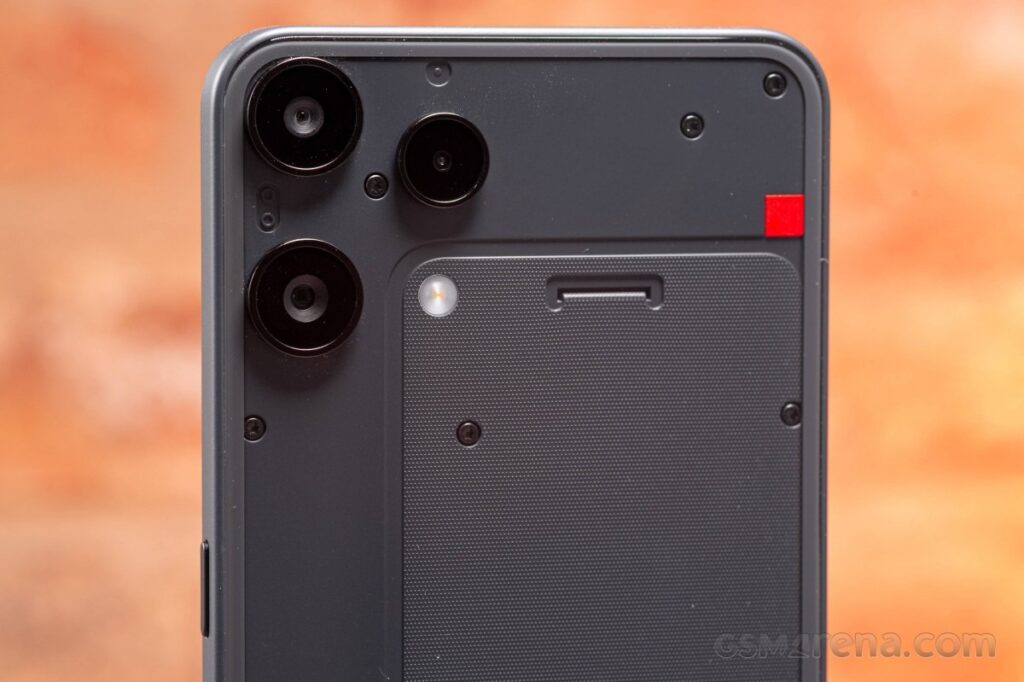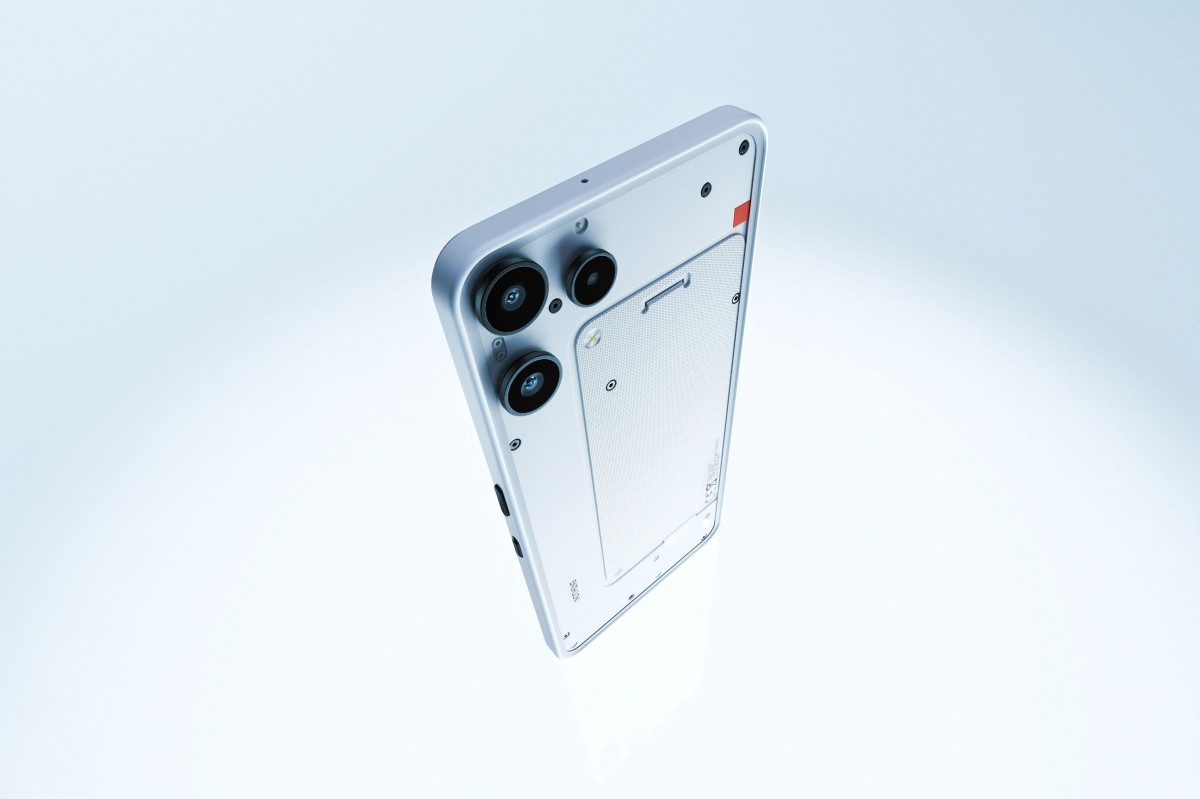Nothing has launched the Phone 3a Lite at £249 / AU$439 (roughly $330), marking the company’s first entry-level device under its main brand rather than the CMF sub-label. The phone ships with a 6.77-inch AMOLED display, MediaTek Dimensity 7300 Pro chipset, and a triple camera system including Nothing’s first macro sensor on a Nothing-branded phone.
The timing raises questions. Nothing already sells the CMF Phone 2 Pro at nearly identical pricing in the UK and Australia, and that device includes a 50MP telephoto camera, where the 3a Lite uses a 2MP macro. For a company that built its reputation criticising unnecessary camera modules, the decision to add a low-resolution macro lens while positioning against its own better-specced product seems counterintuitive.
Nothing Phone (3a) Lite specifications
| Specification | Details |
| Display | 6.77″ AMOLED, 1080 × 2392, 120 Hz refresh, Panda Glass protection |
| Chipset & RAM | MediaTek Dimensity 7300 Pro (4 nm), paired with 8 GB RAM |
| Storage | 128 GB or 256 GB variants + microSD expansion up to 2 TB |
| Rear Cameras | 50 MP main + 8 MP ultra-wide + 2 MP macro |
| Front Camera | 16 MP selfie |
| Battery & Charging | 5,000mAh battery with 33 W wired charging |
| Durability Rating | IP54 (dust & splash resistant) |
| Software | Runs Android 15 with Nothing OS 3.5; promised 3 major OS updates & 6 years security support |
| Pricing | ₦365,000 / €249 / £249 for 128 GB model; €279 / £279 for 256 GB model. |
Nothing now does what it previously mocked
The Phone 3a Lite maintains Nothing’s transparent glass back and comes in black or white colourways. The white variant shows more visual contrast, though both versions feel solid at 199g and 8.3mm thick. The phone uses a plastic frame with IP54 splash resistance and Panda Glass display protection. Carl Pei spent considerable time in Nothing’s early days criticising decorative camera modules on competing phones. The Phone (1) avoided them entirely. The Phone (2a) followed suit. Even the CMF Phone 1’s 2MP depth sensor served a functional purpose. The 3a’s 8MP ultrawide made practical sense.
The 3a Lite includes a 2MP macro camera. Reviews indicate it produces inconsistent results, and the cost savings from omitting it would likely exceed the expense of the additional plastic and glass needed to fill the space. Nothing now does what it previously mocked.
The Glyph Interface has also shrunk dramatically. Previous Nothing phones featured multi-zone lighting patterns that created distinct visual signatures. The 3a Lite reduces this to a single LED dot. It handles basic notification alerts and camera countdowns, functioning more like the notification LEDs Android phones phased out years ago than the elaborate Glyph systems that defined Nothing’s design language.

The screen is better than expected for this price, but the chipset handles expectations reliably
The 6.77-inch flexible AMOLED panel runs at 1080 x 2392 resolution with 120Hz refresh rate. Nothing rates it at 800 nits typical brightness and 3,000 nits peak, adequate for outdoor visibility in this price bracket. An optical fingerprint scanner sits beneath the display alongside a 16MP front camera.
The MediaTek Dimensity 7300 Pro (4nm) pairs with 8GB RAM and either 128GB or 256GB storage. A microSD slot supports expansion up to 2TB. The chipset handles routine tasks without notable performance issues, though it sits below the Snapdragon 7s Gen 3 used in the standard Phone 3a.
One standout element: haptic feedback. Multiple users report the vibration motor performs well above expectations for this price tier, with tactile response quality that typically appears in more expensive devices.
As expected, the macro camera can’t seem to get good photos
The main sensor includes optical image stabilisation, uncommon at this price point. The ultrawide handles standard wide-angle scenarios. The macro camera produces inconsistent results according to user testing, with focus and detail proving difficult to manage even in optimal conditions.
The CMF Phone 2 Pro, sold by Nothing at similar pricing, swaps that 2MP macro for a 50MP telephoto lens. The telephoto provides 2x optical zoom and produces sharper results across more practical use cases than a macro sensor.

Pre-installed apps arrive, and Nothing OS feels different
The Phone 3a Lite runs Nothing OS 3.5 on Android 15, with three years of OS and six years of security updates. The interface still leans minimalist—monochrome icons, clean layouts, and a universal search that scans across messages, contacts, and photos.
What’s new is pre-installed software. Facebook and Instagram come on board, but can be uninstalled. Some Meta services, however, can only be disabled. During setup, a new Lock Glimpse feature also appears, offering lockscreen content with an opt-out option.
It’s a shift from Nothing’s original “bloat-free” philosophy. The brand once prided itself on clean, ad-free software, but recent reports suggest Nothing OS 4.0 could expand monetised elements. The company says these inclusions help keep prices lower, a move that aligns more with budget manufacturers than the early Nothing ethos.
33W charging with no wireless option
The 5,000mAh battery supports 33W wired charging. Nothing provides no wireless charging option. The standard Nothing Phone 3a charges at 50W, reducing full charge time by approximately 30 minutes compared to the Lite model.
The Phone 3a Lite also omits eSIM support, 1080p60 video recording on the front camera, stereo speakers (mono only), wireless charging, and water resistance beyond IP54. Budget phones typically sacrifice features, but the eSIM omission limits carrier flexibility in regions where eSIM adoption has become standard.
The standard Phone 3a costs £100 more and actually justifies it
The Phone 3a Lite is Nothing’s most affordable release yet, priced at £249. It keeps the brand’s design flair—transparent glass back, minimalist interface, and a single Glyph LED—but cuts a few corners to stay within budget.
For £100 more, the standard Phone 3a (£349 / £399) brings a faster Snapdragon 7s Gen 3 processor, a 50MP telephoto lens, a sharper 50MP selfie camera, 50W charging, and the full multi-zone Glyph Interface. The gap in performance and photography is noticeable, making the 3a the better long-term pick if budget allows.
Its closest rival, however, comes from inside the house. The CMF Phone 2 Pro, at £259, matches most of the Lite’s specs—6.77-inch 120Hz AMOLED display, Dimensity 7300 Pro, 8GB RAM, 5,000mAh battery—but adds modular back panels and a 50MP telephoto camera instead of a basic macro. Until Nothing fully spins CMF off as a standalone brand, the CMF model arguably delivers better value for nearly the same money.
Availability: The Phone 3a Lite launched globally across Europe, the UK, Australia, and parts of Asia. In Africa, official listings have appeared in South Africa, Kenya, and Cameroon, though stock varies. Nigeria doesn’t yet have direct retail access, but importers already offer the device. The US remains excluded from Nothing’s rollout.
This phone makes sense for very specific buyers
The Phone 3a Lite works for specific scenarios:
Good fit:
- Users prioritising Nothing’s software experience over maximum hardware value
- Buyers who prefer Nothing’s aesthetic to CMF’s modular design
- Those needing microSD expansion (increasingly rare)
- Parents buying phones for children or teenagers
- Users replacing ageing budget devices
Better alternatives:
- CMF Phone 2 Pro: Better cameras, same price, available now
- Nothing Phone 3a: Significantly better specs for £100 more
- Xiaomi Redmi Note series: Often better specifications at similar pricing
- Samsung Galaxy A-series: Longer software support, established ecosystem
Should you buy?
The Nothing Phone 3a Lite represents competent hardware undermined by contradictory positioning. The display, haptics, and build quality exceed expectations for £249. Nothing OS remains one of the cleaner Android implementations, pre-installed apps notwithstanding.
The macro camera contradicts Nothing’s stated design philosophy. The single-LED Glyph barely justifies the name. The CMF Phone 2 Pro offers superior cameras at the same price point, making the 3a Lite difficult to recommend unless CMF becomes unavailable.
Nothing has created a product that would make sense in isolation but struggles when placed beside the company’s own lineup. The Phone 3a Lite delivers adequate performance and pleasant software. It simply doesn’t deliver enough differentiation to justify choosing it over alternatives that cost the same or slightly more.
If CMF becomes fully independent and the Phone 2 Pro leaves Nothing’s direct sales channels, the 3a Lite’s value proposition improves. Until then, most buyers should look elsewhere.

Phone 3a Lite pros and cons
| Strengths | Weaknesses |
| 6.77″ AMOLED display with strong outdoor visibility | 2MP macro camera produces inconsistent results |
| Exceptional haptic feedback for the price | Single Glyph LED barely resembles original interface |
| microSD expansion up to 2TB | CMF Phone 2 Pro offers better cameras at same price |
| Clean Nothing OS with 6 years security updates | Pre-installed Meta apps contradict Nothing’s original principles |
| 50MP main camera includes OIS | No eSIM support |
| £249 starting price undercuts standard Phone 3a by £100 | Mono speaker instead of stereo |
| No US availability | |
| 33W charging slower than Phone 3a’s 50W |
Read also: Nothing Phone 2 review: 2023’s stylish mid-range finisher and a touch of price tag
Get passive updates on African tech & startups
View and choose the stories to interact with on our WhatsApp Channel
Explore




